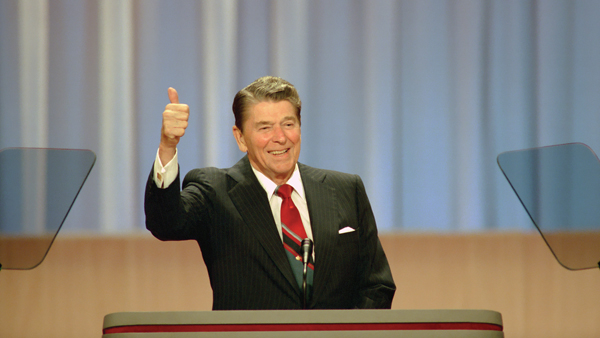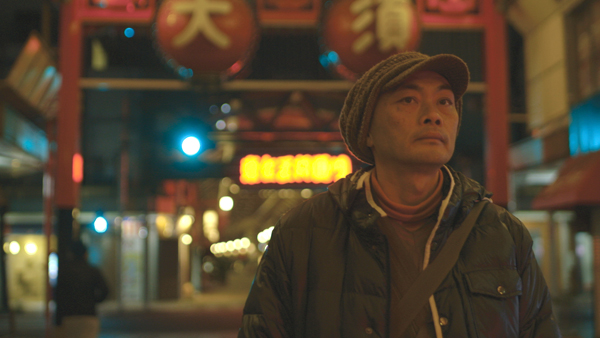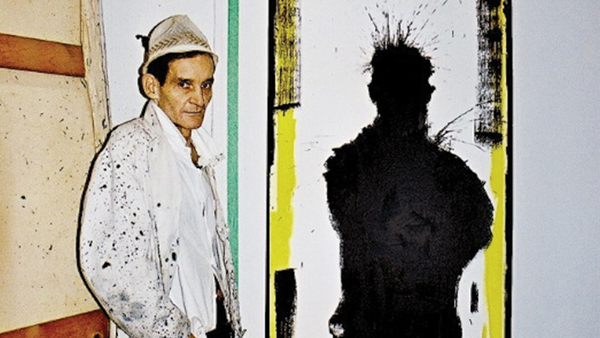A monk whose tranquil veneer conceals an obsession with death. A group of perpetual recluses who shun the modern world. An American president and an art-world sensation. And finally, the residents of one of America’s sunniest cities—who were also participants in the most destructive riot in the nation’s history.
These are the extraordinary subjects of some of the 2017 Tribeca Film Festival’s most absorbing documentaries—and in each case, they are also individuals faced with an event that sends a shockwave through life as they know it. Whether it’s the rise of a new leader on the world stage, a drastic change to personal circumstances, or the collapse of order in the world around them, they must react. Just how they do so can be inspiring at times, and frustrating at others, but either way their actions offer insight about the protagonist specifically as well as the human condition overall.
The highly empathic The Departure centers on a Zen Buddhist monk named Ittetsu Nemoto, who spends his waking hours counseling the suicidal in Japan—at the expense of his own health and his family’s happiness. Director Lana Wilson follows him as he makes his rounds, which include fielding endless phone calls and making countless drop-in visits to the despairing. Along the way, two things become clear: first, Japan has a widespread, seemingly unacknowledged problem of depression and suicide among its populace. Secondly, Nemoto, who employs a highly unorthodox therapy that allows participants to experience what their imagined death would be like, has a real knack for this type of work.
Despite the appreciation we gain for Nemoto, the compulsiveness with which he ignores all else remains mystifying—that is, until a serious health scare forces him to slow down and reflect. Wilson then digs at what’s behind Nemoto’s preoccupation with suicide, turning up a series of tragedies from earlier in his life, which ironically, he never received sufficient counseling for. As his emotional defenses fall away, he is revealed to be every bit as flawed, hurting, and human as those he counsels, making this tale of an iconoclast into something expectedly profound.
The Departure is scheduled to screen on April 22, 23, and 25.
From the beginning, The Sensitives makes it clear how hard life is for these “sensitives,” who have serious, downright debilitating allergies to chemicals, electricity, and other aspects of the modern world that most of us take for granted. Director Drew Xanthopoulos neither tries to prove nor disprove their conditions. Rather, his aim is to offer a humanizing snapshot of his subjects, who are forced to live in homes that resemble hermetically-sealed bubbles, away from most human contact. The film has a sense of intimacy that can be unsettling at times, such as when one of the sensitives suffers an attack on the nervous system or when the need to have environments free of anything industrially made leads to neurotic behavior.
Through the use of a single omnidirectional microphone to collect sound (since wireless microphones give off signals that the protagonist cannot tolerate), Xanthopoulos simulates how the surrounding world can seem especially oppressive. The film is undoubtedly sympathetic, albeit with an overarching theme that human beings are adaptable, even under the most difficult of circumstances. Because of this, The Sensitives is ultimately uplifting. (April 22, 23, and 26.)
Can someone be too much of a rebel? The illuminative Shadowman, which explores the life and work of street artist Richard Hambleton, who became a critical darling before fizzling out epically, delves into the creative processes behind many of Hambleton’s best-known works. They include the life-sized, black-paint figures he spread all over New York City during the ’80s, which embodied the dangerous atmosphere of the time. In video footage, Hambleton shows off his skill at painting these large silhouettes in evocative postures, which he does remarkably quickly.
The second half chronicles the artist’s fall from grace, driven by a combination of drug use and a need to delve into more formalist painting style when the art market didn’t want it. Meanwhile, a procession of interviewees recalls helping Hambleton to get back on his feet, only to be betrayed in return. Director Oren Jacoby attempts to redeem his subject by pointing out that no matter how big he got, the art was most important and that he kept creating even at his lowest point. Jacoby is not entirely convincing in his argument, yet present-day footage of the artist reveals him as a faded shadow of the visionary who once took the city by storm. The sight of which cannot help but arouse fascination. (April 22, 24, and 28.)

Ronald Reagan addresses the 1988 Republican National Convention in The Reagan Show {Ronald Reagan Presidential Library)
The incisive, occasionally surreal The Reagan Show looks back on the presidency of Ronald Reagan, which offered no shortage of inspiring imagery often at the expense of substance. Combining in-house video shot by the White House’s official television crew with previously-aired news footage, the film reframes the latter days of the Cold War as a battle between two mighty PR teams, with the Soviets initially successful at portraying Secretary General Mikhail Gorbachev as more serious about peace than Reagan. Yet the president’s administration has a secret weapon it can always fall back on whenever matters look bleak: Reagan’s well-honed acting ability, which allows him to appear sincere even when stumping for ideas that could make the world less stable.
Much of the film’s humor comes from the patriotic pageantry and simplistic, occasionally pop culture–tinged messaging of the Reagan era. (Regarding his ill-fated Star Wars defense system, he at one point says, “The Force is with us.” Unfortunately, it’s clear many responded to the comment warmly and without irony.) One assumes directors Pacho Velez and Sierra Pettengill, with so much footage at their disposal, would be able to get at the heart of who Reagan was, but ironically, the more time elapses, the more opaque their subject seems. It’s as if the actor found his defining role and then played it for too long, to the point that his performance descended into the rote tics and flourishes. A fascinating possibility, albeit disheartening given the high stakes involved. (April 23, 25, and 26.)
Finally, LA 92 combines news footage, previously unseen home videos, and more into a harrowing portrait of the 1992 riots that devastated Los Angeles over six days. There is a slow-burning quality early on, as the African-American community reacts with growing unrest to the horrific beating of Rodney King by white police officers, an incident captured on video. The sense of tension persists as the cops are put on trial and reaches its breaking point when all four are found not guilty.
The film’s first half makes a convincing case that the Los Angeles Police Department and the city’s justice system treated African Americans like second-class citizens. With the second half comes the reckoning as initial civil disobedience devolves into beatings of white bystanders, mass rioting, looting, and buildings set ablaze throughout the city. Since much of the film consists of footage shot during the thick of the rioting, there is much white-hot anger on display. However, we also get perspectives that were underreported during the initial coverage of the chaos, such as the Asian shopkeepers who risked their lives in standing toe-to-toe with the looters.
Directors Dan Lindsay and TJ Martin never lose sight of the human side of their tragic subject, although by the end, what engenders the greatest amount of sympathy is the city itself, now resembling a scarred battleground. (April 23, 25, and 27.)








Leave A Comment